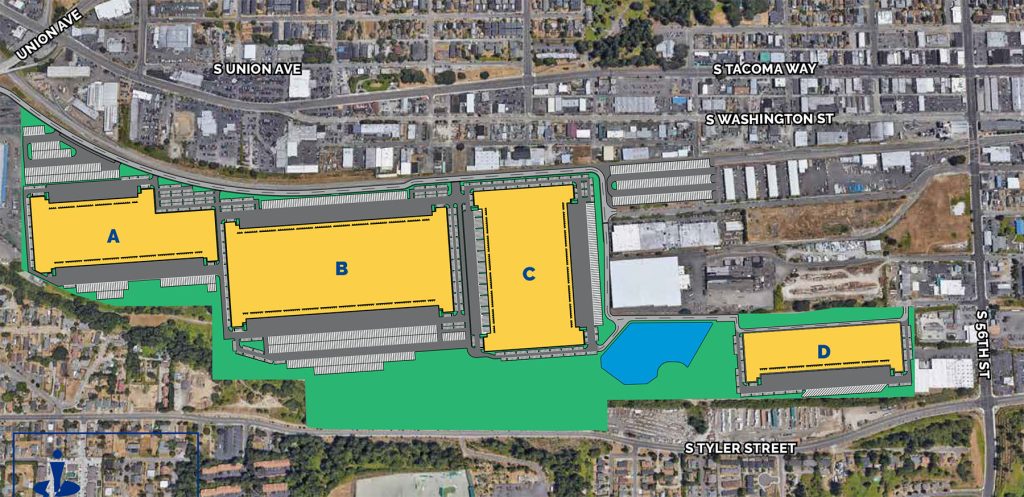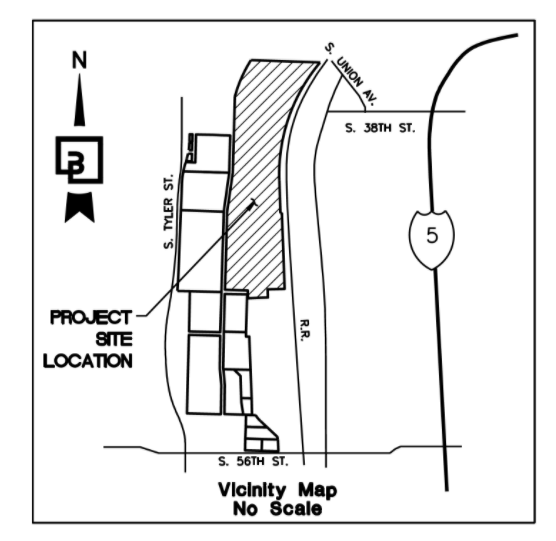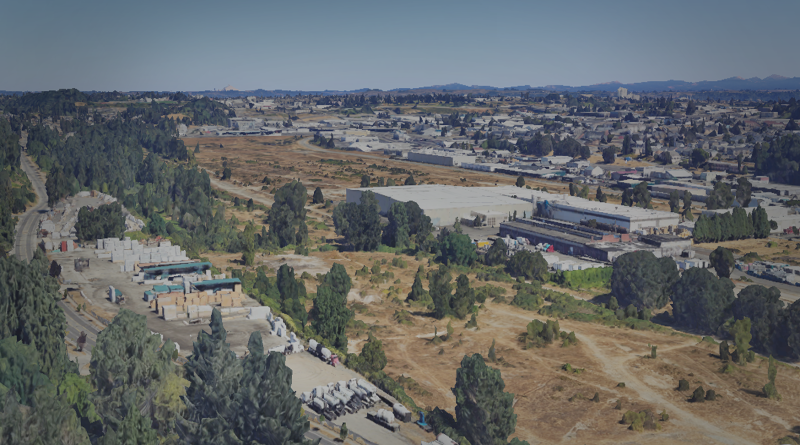Tacoma Bridge Industrial Warehouse Project threatens 125-acre wetland area
The industrial warehouse project is set to move forward in the face of pressure from community members and environmental justice advocates.
CORRECTION: An earlier version of this article misidentified the source of an op-ed as Dr. Rubén Casas. The op-ed was written by the Climate Alliance of the South Sound. The article has been corrected.
Despite environmental justice resistance in South Tacoma, the City of Tacoma issued land use permits for the Bridge Industrial Warehouse Project on April 21, 2023, located in Bridge Point.
The developer, Bridge Industrial, is still in the process of obtaining their development permits for the land, according to Shirley Schultz, a project planner for the City of Tacoma.
The 2.5 million-square-foot warehouse project, which spans across four large, solar-ready concrete buildings, threatens 125 acres of Tacoma’s remaining wetland vegetation and will disrupt portions of a natural stream buffer on site. Environmental justice advocates argue this will exacerbate climate concerns like the urban heat island effect and disproportionately impact the houseless population in a majority Black neighborhood zoning area.
“They have opted, it seems, to not take into consideration how this project may further imperil residents of the city who have been historically impacted by pollution and congestion,” wrote Dr. Rubén Casas of the Culture, Arts and Communication division of the School of Interdisciplinary Arts and Sciences at the University of Washington Tacoma to The Tacoma Ledger.
Dr. Casas is an adjunct assistant professor in the School of Urban Studies and serves as the faculty lead for the Urban Environmental Justice Initiative at UWT.
In an Op-Ed for The Urbanist, members of the Climate Alliance of the South Sound described the impact this project could have on the surrounding community, considering Tacoma’s history of systemic environmental racism.
Community members of South Tacoma, environmental law organizations like Earthjustice and other political activists have expressed frustrations over their voices not being heard, since comments weren’t permitted to be considered in the Tacoma Hearing Examiner’s decision making on the land use permits.
“I understand the comments and frustration, but we take those into account, when we’re looking at the things we have discretion over,” Schultz said.
The State Environmental Policy Act states that if a developer proposes a project in a zone that allows it, then the city is mandated by Washington State Law to review and process its land use and building permits within 120 days of the proposal by those specific zone codes at the time of the proposal, according to the City of Tacoma.

There was an eight-week public notice and collection period for comments that began last April. This was an extension of the usual two-week period by the city, according to Maria Lee, a media and communications contact for the City of Tacoma.
Under Washington State Law, the Tacoma City Council isn’t authorized to be involved in land use permit review and processing, though it can consider and adopt zoning changes each year with feedback from the community. Any new zoning changes will not apply to previously proposed projects, though zoning changes can prohibit future development projects.
In consideration of the 2030 Climate Action Plan and the conditional requirements for a Critical Area Development Permit, the City of Tacoma has placed specific conditions on air quality and greenhouse gas emissions, urban forestry and vegetation and related environmental health concerns, located in the FAQ section for the Bridge Industrial Project.
“With this specific project, we did use our SEPA authority to require a lot more trees than our code would have required, and they’re still working through the details on that,” Schultz said.
The city requires that the developer achieve 30 percent mature tree canopy coverage per the City of Tacoma Urban Forest Manual and TMC 13.06.090.B.3.d. Additionally, the city will require a separate report filed annually with the City of Tacoma for three years, following the signing of a monitoring contract. This will track the replacement of non-viable or removed vegetation within the critical wetland area.
While animals depend on wetlands for food and natural habitats, humans depend on the tree canopy and vegetation to cool the overall temperature of Tacoma and reduce air pollution.
Nearby BIPOC neighborhoods and the local population of houseless people would be disproportionately impacted by increased vehicle pollution and traffic.
Several studies show that high levels of Carbon emissions can lead to asthma and respiratory allergy issues in areas with high truck activity, according to a peer-reviewed research article by UWT Alumni Quan Yuan, Environmental Justice in Warehousing Location: State of the Art.
“While the city may well be within its legal capacity, given the way the auditor has applied existing state regulatory law in granting these permits, I think that in doing so it may also be contradicting what the city says it wants and means to do to correct historic and persistent instances of environmental injustice in our city,” Dr. Casas wrote.
The City of Tacoma’s Environmental Services division, which is housed at the Center for Urban Waters, handles stormwater, sewer and wastewater research. They also handle project planning, and are still very involved in the project review and development permits, according to Schultz.
Bridge Industrial will be responsible for costs associated with any traffic and road safety modifications to the area, as well as limitations on vehicle emissions, with a strict no idling policy for all vehicles on site.




